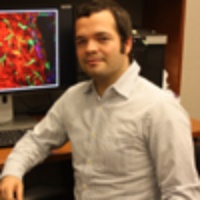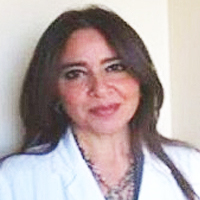Elderly (> 70 years) Multiple Myeloma Patients Benefit Equally from Autologous Hematopoietic Stem Cell Transplantation When Compared to Younger Patients
Published on: 8th August, 2024
Autologous Hematopoietic Stem Cell Transplantation (AHSCT) performed after induction therapy is the standard of care for newly diagnosed Multiple Myeloma (MM) patients who qualify. Our institution has performed AHSCT for MM since 1991, and in this study, we sought to retrospectively examine the outcomes of 303 MM patients who underwent AHSCT from 1991-2021. We focused on Overall Survival (OS) and Progression-Free Survival (PFS) in patients in addition to Landmark survival (1-year post-transplantation). We found that in elderly patients > 70 years of age there was no significant difference in OS at 12 years, with 51% for patients < 70 years of age and 50% > 70; these were the same numbers for PFS at 12 years as well. We also found that median overall survival is improving overall with each decade in our transplanted MM patients with patient survival improved to over > 80% regardless of age at 7 years, when the previous median overall survival was 6 - 6.6 years before 2001. Given our findings, supported by others, we show that survival is continually improving over time in MM AHSCT patients and that AHSCT can be performed safely with equivalent landmark and long-term PFS and OS in patients of advanced age.
Impact of Intravenous Busulfan Pharmacokinetics on Safety in Pediatric Patients who have undergone Hematopoietic Stem Cell Transplant
Published on: 3rd December, 2024
Introduction: Busulfan (Bu)-based regimens are crucial for myeloablative conditioning in pediatric allogeneic stem cell transplantation. Despite its efficacy, Intravenous Bu has a narrow therapeutic index and variable pharmacodynamics especially in children, heightening the risk of adverse events. This study explores Bu dosing and related organ toxicities in pediatric patients at a tertiary center in Saudi Arabia.Methodology: This retrospective study at King Fahad Specialist Hospital in Dammam (KFSH-D), Saudi Arabia, included pediatric patients (≤16 years) treated with intravenous Bu before bone marrow transplantation from 2010 to 2022. Pharmacokinetic dose adjustments were based on AUC targets of 900-1350 µMol-min. Descriptive measures included mean, Standard Deviation (SD), median, minimum-maximum values, counts, and percentages. Statistical analyses used Kruskal-Wallis, Chi-square, and Fisher’s exact tests. Ethical approval was obtained from KFSH-D.Results: We identified 44 pediatric patients who underwent Bu prior to HSCT. Mean age was 4.95 ± 2.49 years, with a female majority (56.8%). Primary diseases included Beta Thalassemia (34.09%), Neuroblastoma (29.55%) among others. There was no significant difference in the cohort’s demographic and clinical features of the cohort. Nonetheless, higher infections were found in the Low-AUC group (66.7%) compared to the Target-AUC (40.0%) and Higher-AUC groups (0.0%) (p = 0.015).Conclusion: This study emphasizes the need for therapeutic drug monitoring and individualized Bu dosing in pediatric HSCT to minimize toxicity and improve outcomes. Larger multicenter studies are recommended to refine dosing strategies and enhance the safety and efficacy of Bu-based regimens.
Exploring the Potential of Medicinal Plants in Bone Marrow Regeneration and Hematopoietic Stem Cell Therapy
Published on: 31st January, 2025
Blood cell production through hematopoiesis within the bone marrow serves both to maintain blood equilibrium and to respond to tissue injury and infectious demands. Hematopoietic stem cell (HSC) therapy developments have revolutionized medical treatment approaches for anemia leukemia and bone marrow failure caused by chemotherapy or radiation exposure. The therapeutic compounds present in medicinal plants have traditionally supported blood health and researchers now understand these plants could help regenerate bone marrow tissue. The analysis investigates how phytochemicals affect HSC proliferation and differentiation while supporting HSC survival. The medicinal plants Panax ginseng, Astragalus membranaceus, and Curcuma longa receive special attention for their documented ability to enhance hematopoiesis in preclinical and clinical settings. This review examines the challenges that include standardization issues, toxicity concerns, and regulatory barriers alongside future perspectives about combining plant-based therapies with traditional treatments to improve bone marrow recovery and health results.
















